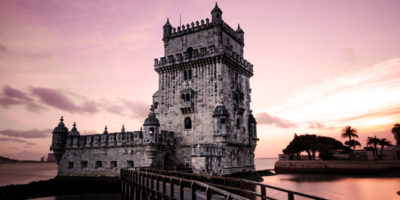
Cathedral of our Lady, Antwerp, Belgium. Photo by Riko Ibe. Wikimedia Commons.
Top 10 Interesting Facts about Cathedral of Our Lady Antwerp
The Cathedral of Our Lady is a Roman Catholic cathedral in Antwerp, Belgium. Today’s see of the Diocese of Antwerp started in 1352. Although the first stage of construction was ended in 1521, it has never been ‘completed’. Constructed in Gothic style, its architects were Jan and Pieter Appelmans. It contains a number of significant works by the Baroque painter Peter Paul Rubens, as well as paintings by artists such as Otto van Veen, Jacob de Backer and Marten de Vos.
The richness of the architecture in Bruges emphasizes the glory period of the city during the Middle Ages. The Architecture in Antwerp reflects the glory period of the city during the Renaissance and Baroque eras. Let’s look at the Top 10 Interesting Facts about Cathedral of Our Lady Antwerp.
1. It’s construction began in 1352

Cathedral of Our Lady. Photo by Sergey Ashmarin. Wikimedia Commons.
In 1352, construction was begun on a new Our Lady’s church which would become the largest Gothic church in Belgium. In the beginning, it was to be provided with two towers of equal height. In 1521, after nearly 170 years, the new church of Our Lady was ready. The south tower reached only as far as the third-string course.
2. In 1533 the church was caught in huge flames
During the night of 5–6 October 1533, the new church was largely gutted by fire, however Lancelot II of Ursel managed to save the building. The completion of the second tower was therefore delayed, which led to its ultimate postponement. Moreover, the church only became the cathedral of the bishopric of Antwerp in 1559.
3. Protestants destroyed a large part of the church’s interior
During the Iconoclasm of 20 August 1566, Protestants destroyed a large part of the cathedral interior. The eye-witness Richard Clough, a Welsh Protestant merchant then in Antwerp, wrote that the cathedral: “looked like a hell, with above 10,000 torches burning, and such a noise as if heaven and earth had got together, with falling of images and beating down of costly works, such sort that the spoil was so great that a man could not well pass through the church. So that in fine [short], I cannot write you in x sheets of paper the strange sight I saw there, organs and all destroyed.”
4. Johannes Ockeghem was a vicar singer in the church
At the beginning of the 15th century, the cathedral’s choir started developing an active musical life, and as a result, the cathedral’s importance in the history of music soon soared. Johannes Ockeghem, one of the most important composers of the 15th century, served here as a vicar-singer in 1443, and so did Jacob Obrecht between 1492 and 1497.
Organists who worked at the cathedral include Henry Bredemers (1493–1501), who went on to become a teacher to Philip the Handsome’s children and the renowned English composer John Bull (1615–1628), who fled to Flanders from his home country escaping justice.
5. The largest bell in the church requires 16 bell ringers

Photo by FaceMePLS. Wikimedia Commons.
The church’s one finished spire is 123 meters (404 ft) tall,[10] the tallest church tower in the Benelux. Charles V, Holy Roman Emperor commented that the spire should be kept under glass, and Napoleon compared the spire to Mechlin lace.
The largest bell in the tower requires 16 bell ringers. The west portal features statues which include the missionary Saint Willibrord. He is thought to have spent time in Antwerp in the 7th century.
6. The cathedral has in it’s possession major artworks
The cathedral possesses some major works of art like; The Raising of the Cross – Peter Paul Rubens, Assumption of the Virgin Mary – Peter Paul Rubens, The Descent from the Cross – Peter Paul Rubens, Two of these artworks were confiscated by Napoleon and moved to France, The Raising of the Cross (which was actually the main altar piece of the St Walburga church) and The Descent from the Cross, but were returned to the cathedral in the 19th century.
7. Some people were buried in the cathedral

Cathedral of our Lady. Photo by Unknown. Wikimedia Commons.
Inside the Cathedral some important graves still can be found, amongst them family members of the noble houses of Rubens, Fourment, Goubau, Tucher, Plantin, Moretus, de Borrekens, etc. Some stones were resited there after Saint-Michael’s abbey church was lost. Politicians, bishops, municipal and grand almoners of the city, and artists were buried in the cathedral.
8. The original plan of the cathedral had a completely different design
One of the most interesting facts about Antwerp City Hall is that the original plans of the building date back to the 1540s. These plans featured a Gothic design created by another local architect named Domien de Waghemakere.
Because these were turbulent times, the stones that were intended to be used to erect this magnificent Gothic building were used to fortify the city’s defenses instead. This building would have looked very similar to the Gothic city halls erected in other cities of the Duchy of Brabant such as Brussels City Hall and Leuven City Hall.
9. The building incorporates both Flemish and Italian Renaissance elements
The plans completed in the 1540s were shelved following the threat of war. During the subsequent few decades, the Gothic style had fallen out of favor. Magnificent Renaissance buildings were erected all across Europe and because the whole point of the building was to impress, the city hall was constructed in the fashionable style of the day.
The building incorporates both Flemish elements that were based on existing structures and Italian influences based on the Renaissance style that emerged there.
10. The central part is decorated with female statues and distinctive coats of arms

Photo by Isai Symens. Wikimedia Commons.
The rusticated stone used on the first floor is reminiscent of the Renaissance palaces that can be found in Italy such as the Pitti Palace in Florence. There are two stories above the ground level that are decorated with both Ionic and Doric columns.
The upper floor features an open gallery. The most decorative part of the building is the central part which is decorated with female statues. These represent an allegory of Justice, Prudence, and the Virgin Mary. The gilded elements are coats of arms of the Duchy of Brabant, the Spanish Habsburgs, and the Margraviate of Antwerp.

 English
English











